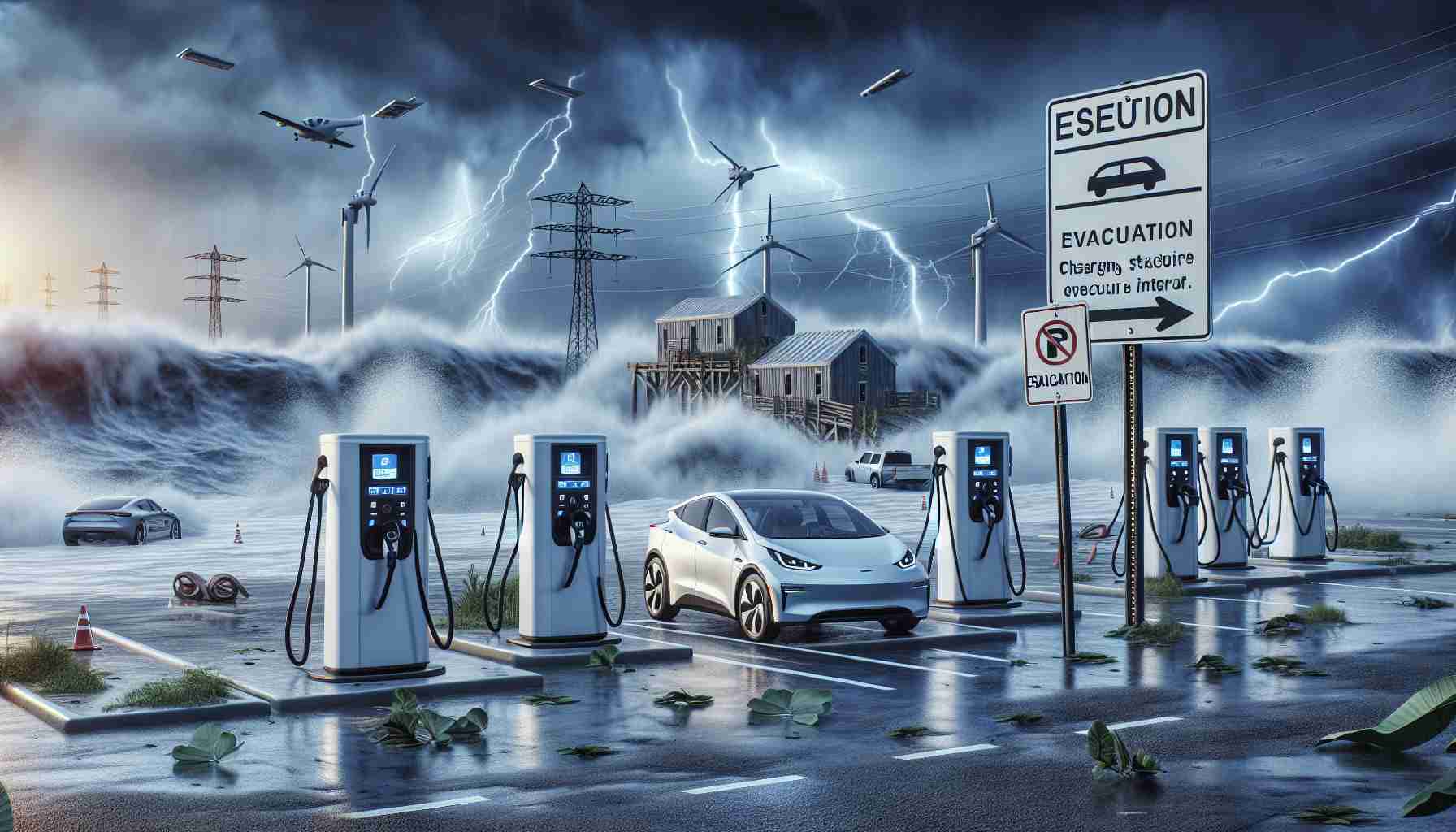Following the aftermath of Hurricane Ian in 2022, Florida’s Chief Financial Officer Jimmy Patronis experienced alarming incidents involving electric vehicles (EVs) and seawater. He shared his observations on social media, highlighting a troubling occurrence where an EV caught fire during rescue operations, despite firefighters extinguishing the flames, only for them to reignite repeatedly.
Patronis sought insights from the National Transportation Safety Board (NTSB), which revealed that lithium-ion batteries found in EVs can become extremely volatile when exposed to saltwater. This vulnerability can cause thermal runaway, a dangerous situation triggered by salt bridges forming within the battery pack, leading to short circuits and excessive heat.
As Hurricane Helene approaches, potentially bringing significant storm surges to Florida’s coastline, Patronis, alongside Governor Ron DeSantis, urges residents to relocate their electric vehicles to safer, elevated locations. The combination of saltwater and lithium batteries poses a unique hazard, particularly dangerous in Florida’s flood-prone areas.
There have been multiple reports of EVs igniting after being submerged during hurricanes, with incidents observed in Naples and other coastal cities. The potential for destructive fires is not confined to EVs; even golf carts and e-bikes with lithium batteries are at risk.
Patronis continues to advocate for public awareness regarding these dangers and is seeking legislative measures to better regulate lithium batteries’ use in flood-prone conditions, especially as Florida experiences a growing number of registered EVs, numbering around 280,000.
Essential Tips and Life Hacks for Electric Vehicle Safety During Hurricanes
In light of recent events concerning electric vehicles (EVs) and their interaction with seawater during Hurricane Ian, it’s crucial for EV owners in flood-prone areas to be aware of potential hazards. Here are some valuable tips, life hacks, and interesting facts to help ensure the safety of your electric vehicle and yourself during hurricane season.
1. Relocate Your EV Before the Storm
Before a hurricane approaches, always ensure that you relocate your electric vehicle to a safe and elevated location. As Florida’s Chief Financial Officer Jimmy Patronis highlighted, even seemingly safe vehicles can become high-risk when exposed to saltwater. Elevating your vehicle can mitigate the danger of potential flooding.
2. Understand Your Battery Technology
Knowing your vehicle’s battery type is critical. Lithium-ion batteries, commonly found in electric vehicles, are sensitive to water damage and can lead to thermal runaway, posing significant fire risks. Regular maintenance and troubleshooting can keep your battery in optimal condition.
3. Create an Emergency Plan
Have a comprehensive emergency plan that includes your EV. Ensure you know how to evacuate and where to park your vehicle safely away from flood zones. Keep your vehicle’s manual accessible for reference to any emergencies.
4. Stay Informed with Local Alerts
Sign up for local alerts concerning weather forecasts and evacuation orders. Keeping abreast of changing weather conditions and local advisories can help you make informed decisions regarding your vehicle and your safety.
5. Invest in Protection
If you live in a flood-prone area, consider purchasing protective gear for your vehicle. Car covers designed for flood protection can offer some degree of safeguarding against water exposure.
6. Explore Insurance Options
Review your insurance policy to ensure it covers flood damage for your electric vehicle. Given the increasing risks related to climate change and natural disasters, it may be prudent to discuss additional coverage options with your insurance provider.
7. Prepare for Aftermath Emergencies
After a storm, inspect your vehicle for any potential damage. If your EV comes into contact with seawater, do not attempt to start it. Contact professionals for an assessment, as saltwater can cause lasting damage to the electrical systems and battery.
Interesting Fact:
Did you know that saltwater can create “salt bridges” in lithium-ion batteries? This phenomenon can dangerously increase the likelihood of short circuits and lead to thermal runaway situations, highlighting the critical nature of immediate action during flood threats.
As the hurricane season continues to pose risks, staying informed and prepared is imperative for all electric vehicle owners. For more tips and updates related to vehicle safety and emergency preparedness, visit Florida Disaster.







